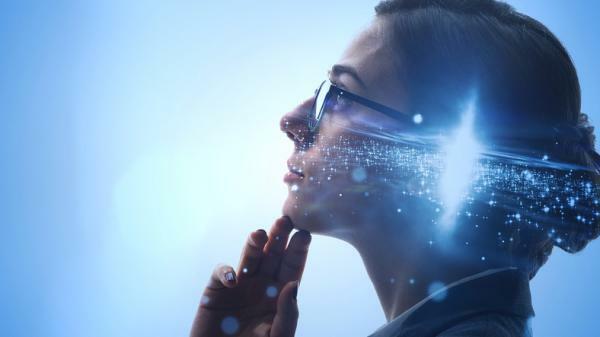
When the word hallucination came into common usage in the early 1500s, it simply indicated a swoon, a "wandering mind." It was only in the thirties of 1800 that Jean-Etienne Esquirol, a French psychiatrist, gave the term the current meaning: in general, they are defined as percitos that have their origin in the absence of any outer reality; it is, for example, seeing or hearing things that do not exist. Through this Psychology-Online article we will be able to discover the various types of hallucinations, the causes of these phenomena and some examples.
Hallucinations are fundamental symptoms of different psychopathological conditions, but the presence of hallucinations does not imply necessarily that the person who manifests them is psychotic: they can be considered a psychotic symptom when the person is awake and fully alert.
Why do hallucinations occur? As there is no external stimulation, sensory stimulation is exclusively internal (brain) and is, in general, a symptom of severe psychic pathologies such as schizophrenia, paraphrenia, severe depression and mania
For those who live them, hallucinations seem very realThey can mimic perception in all its aspects, starting with the way they are projected onto the outside world. The hallucinated individual is convinced that the object that he sees and feels is a reality; misidentifies the memories of his past and his past fantasies, translating one and the other into a situation present and attributing to them an existence that seems to him independent of himself, while he tends to attribute a automatic, involuntary and abnormal character to the hallucinatory experience.
Hallucinations are defined in the DSM-V as perception experiences similarly occurring without an external stimulus and not under voluntary control; It is also specified that hallucinations must occur in the context of a complete sensorium, since those that occur during sleep (hypnagogic) or during awakening (hypnopompic) are considered within the range of experiences normal. These common sensory experiences are not true hallucinations, and therefore are not pathological; they are best defined as the figment of imagination.
Hallucinations, moreover, must be distinguished from illusions, which represent mere misinterpretations of real sensory stimuli; they are common and generally not pathological. Hallucinations, in effect, have the clarity and impact of true perceptions but without the external stimulation of the relevant sense organ. For example, those who "hear voices" perceive a voice that comes from outside and that generally says sensible words and phrases.
Hallucinations, according to Baillarger's scheme, are classified into two groups: psychosensory and psychic. Within each of these groups we find several types of hallucinations depending on the sense they affect, in the case of psychosensory ones. Below we will look at the most common types of hallucinations and examples of the different types of hallucinations.
1. Psychosensory hallucinations
Psychosensory hallucinations have precise sensory attributes that can affect all sensory activities, so there are visual, olfactory, taste, acoustic, tactile hallucinations, etc. We will see each of these types below.
2. Visual hallucinations
Visual hallucinations can be elementary, and refer to simple phenomena such as colors, lights, objects, or refer to complex and moving scenes. There are several types of visual experiences, such as:
- The dysmegaloscopic hallucinations: variation in the size of objects or people.
- The hallucinations zooptics: small insects or animals are seen in the environment or on the body.
- The hallucinations autoscopic: see the body and face from the outside.
- The hallucinationswith synesthesia: mix sensory channels, such as listening to the sound of green.
Visual hallucinations often indicate the presence of a psychotic disorder substance-induced, or of a psychotic disorder due to another medical condition; they can also appear in the setting of a major neurocognitive disorder (dementia) or delirium.
3. Auditory (or acoustic) hallucinations
In the case of elementary auditory hallucinations, the subject perceives sounds, noises, hisses, musical gestures, etc. that can be distinguished from symptoms caused by acoustic damage or diseases of the hearing system, such as tinnitus or ringing. Sometimes, in delusional patients, elemental hallucinations they can be inserted into secondary delusional elaborations. For example: a person hears a whistle and is convinced that people are whistling at him to say bad things to him. Is about complex auditory hallucinations when the subject perceives voices and different verbal contents.
4. Olfactory hallucinations
The simple olfactory hallucinations they may be typical of focal (temporal lobe) or systemic neurological diseases (eg, the smell of burning rubber typically reported in the epileptic aura). More often, they are inserted into delusional stones: for example, a patient who when in public smells the odor of excrement and is convinced that others attribute it to him.
5. Taste hallucinations
The taste hallucinationsInstead, they are reported as sour or nauseating tastes, with patients thinking that they are poisoned or that someone puts medication in their food.
6. Somatic hallucinations
Somatic hallucinations affect the perception of one's own body, and it is not easy to distinguish true sensations interpreted in a delusional way from false perceptions, since there is no way to distinguish them objectively. Among somatic hallucinations we can distinguish:
- Kinesthetic hallucinations: abnormal sensations of the whole body (perceived as wood, glass, decomposing) or parts of it (the limbs are deformed, the viscera invaded by animals). Kinesthetic hallucinations related to the sexual sphere are also frequent (the patient perceives the experience of floating, masturbation, direct or distant penetrations).
- Tactile and thermal hallucinations: perception of touches, tingling or sensations of cold, heat, wetness (hydric hallucinations), electric shocks (suitable hallucinations).
- Kinesthetic or motor hallucinations: perception of movement in the absence of real movements. Movement can be spontaneous or imposed (the patient feels compelled to act or perform actions).
7. Psychic hallucinations
In psychic hallucinations, the hallucinatory activity is experienced by the subject not as a sensory impression, but as thought or feeling. For example, internal voices, echo of thought. The latter are also called pseudo-hallucinations because they lack that character of sensoriality that should be precisely hallucinatory phenomena. Next we will see the modalities that we can find within this type of hallucinations.
8. Verbal hallucinations
Within verbal hallucinations, we can find some variants. The complex verbal hallucinations they are commonly called "voices", typical of some mental disorders such as schizophrenia, severe depression and mania. Voices have different characteristics and ways of being reported by patients: they can be commented, offensive, imperative or commanding, echo in thought. In verbal hallucinations there may be spatial differences, so voices can come from outside, but also from inside of the individual, and be lived by the subject as imposed, alien, intrusive, alien to themselves. In addition, voices can be characterized by the identity of the speaker, which can also be identify: often the speaker has an important subjective meaning for the individual, in addition of a some authority and power, and what he says makes sense (it can be God, a saint, the devil, a deceased or living relative, etc.).
9. Pseudo-hallucinations
For British authors, this type of hallucinations is a hallucination without the experience of external perception but lived inside the mind; the subject recognizes the strangeness and non-correspondence with forms of reality. It is difficult here not to think that such psychic phenomena are nothing more than common mental images become obsessive and referred to by the subject as intrusive, not voluntary and imposed.
10. Hypnagogic hallucinations
In addition to the classification of hallucinations above, we find other types of hallucinations, such as hypnagogic hallucinations. The hypnagogic state is the state of consciousness of transition from wakefulness to sleep, and among the mental phenomena that can occur within this state, hypnagogic hallucinations are precisely vivid and intense experiences that occur at the beginning of a sleep period and they often occur in conjunction with hypnagogic paralyzes. This phase lasts from a few seconds to several minutes in which some or all of the senses, but especially the sight, the Hearing and touch can be affected and it is often very difficult for the subject to distinguish the hallucination from reality.
11. Hypnopompic hallucinations
During the hypnopompic stage, the psychophysiological state that carries from sleep to wakefulness, sensory psychic phenomena can occur (in particular visual and auditory but sometimes olfactory and tactile) that often, due to their vividness, can be perceived as real. During the hallucinationshypnopompiche you can have the sensation, for example, of being called by other people, or in more traumatic cases, experiencing the presence of one or more intruders in the bedroom. The hallucinationshypno-suckers sometimes occur in association with sleep paralysis. One of the most frequent examples of hypnopompic hallucinations is see spiders when waking up.
12. Functional hallucinations
A functional hallucination can be defined as false perception when a real stimulus is perceived, since the hallucinations functions derive from stimulus. The subject has hallucinations when a sensory character is dominant with respect to the rest of the cognitive activity.
13. Reflected hallucination
Reflected hallucination is hallucination in a sensory mode when something is perceived in a different modality. An example of reflected hallucination would be: the subject sees a photo of a Ferrari and perceives the typical roar of the engine.
14. Extracampine hallucinations
In extracampanal hallucinations, hallucinations are perceived outside the perceptual field. Some examples of extracampal or extracampal hallucinations are: the subject looks from behind, hears noises tens of hundreds of kilometers away ...
15. Vivid hallucinations
These types of hallucinations are vivid hallucinations, but considered false by the subject. It is typical of neurological disorders, mostly temporal and occipital zone, or brainstem lesions.
16. Dissociative hallucinations
Dissociative hallucinations are usually visual hallucinations and usually occur in states of intense emotional turmoil, such as in recent mourning or after emotional trauma. These types of hallucinations are considered altered states of consciousness without being a psychotic disorder.


